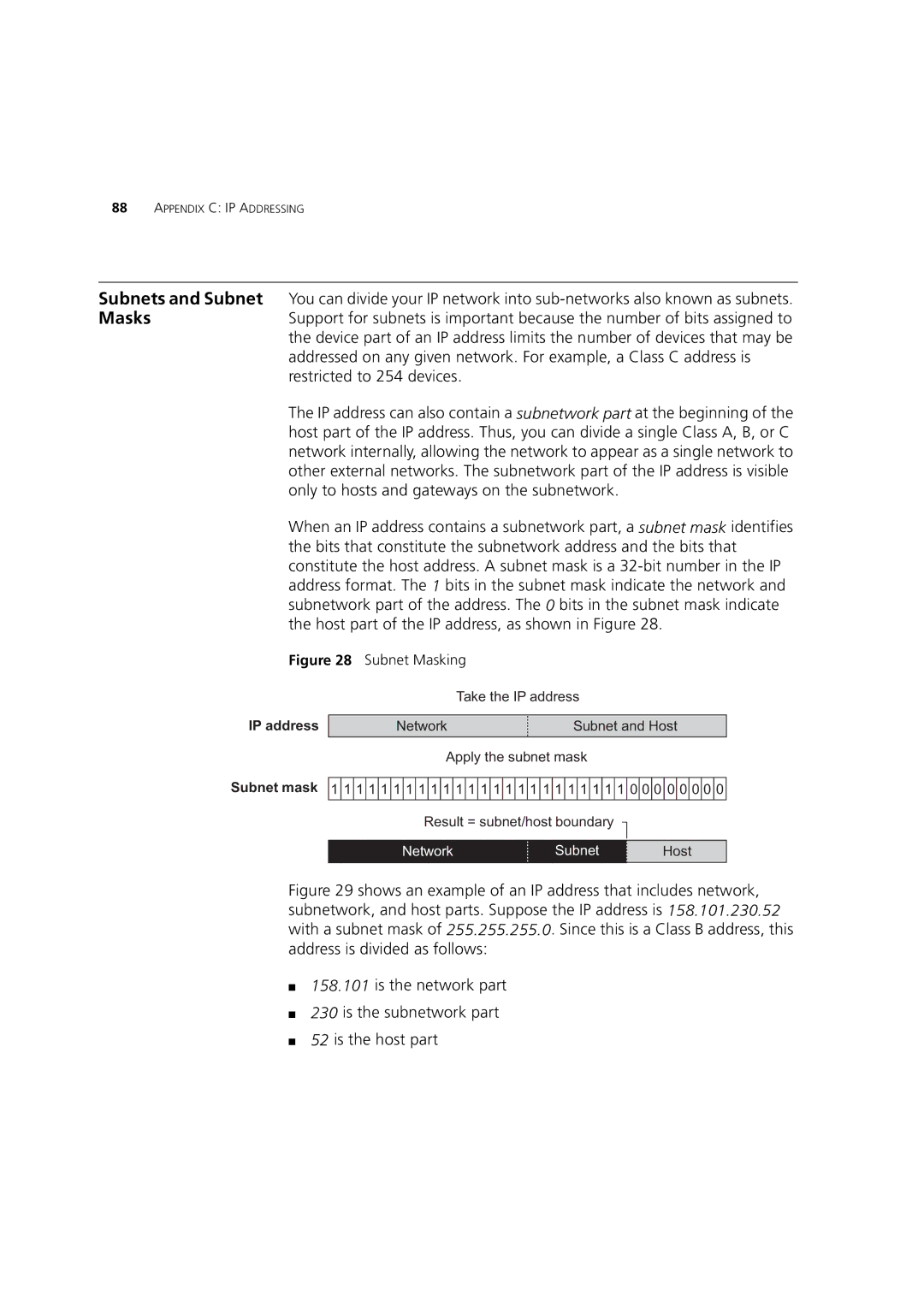
88APPENDIX C: IP ADDRESSING
Subnets and Subnet You can divide your IP network into
MasksSupport for subnets is important because the number of bits assigned to the device part of an IP address limits the number of devices that may be addressed on any given network. For example, a Class C address is restricted to 254 devices.
The IP address can also contain a subnetwork part at the beginning of the host part of the IP address. Thus, you can divide a single Class A, B, or C network internally, allowing the network to appear as a single network to other external networks. The subnetwork part of the IP address is visible only to hosts and gateways on the subnetwork.
When an IP address contains a subnetwork part, a subnet mask identifies the bits that constitute the subnetwork address and the bits that constitute the host address. A subnet mask is a
Figure 28 Subnet Masking
Take the IP address
IP address
Network![]() Subnet and Host
Subnet and Host
Apply the subnet mask
Subnet mask
1 ![]() 1 1 1 1 1 1 1
1 1 1 1 1 1 1 ![]() 1
1 ![]() 1
1 ![]() 1 1 1 1 1 1 1
1 1 1 1 1 1 1 ![]() 1
1 ![]() 1
1 ![]() 1 1 1 1 1 0 0
1 1 1 1 1 0 0 ![]() 0
0 ![]() 0
0 ![]() 0 0 0 0
0 0 0 0
Result = subnet/host boundary
Networknetwor | Subnetsubn | Host |
